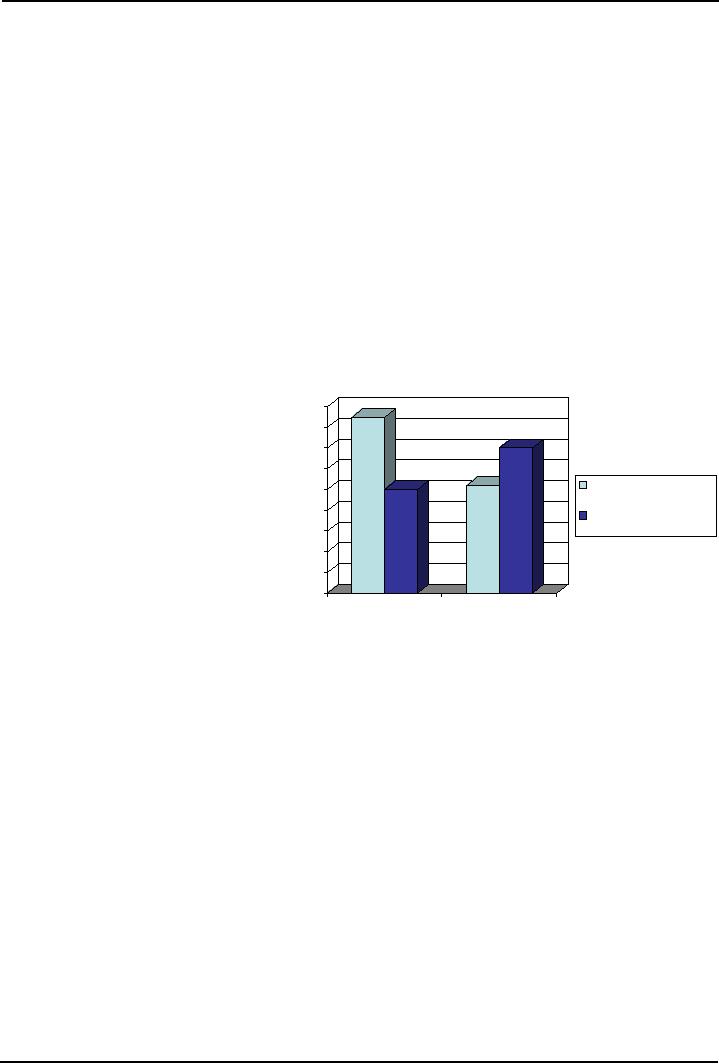 |

Social
Psychology (PSY403)
VU
Lesson
15
PERSON
PERCEPTION: WHEN PERSON PERCEPTION IS
MOST CHALLENGING
Aims:
·
Evaluating
when person perception can
be most challenging
Objectives:
·
Discussing
how perception of baby or mature
aces affects people's perceptions.
·
Describing
how to detect lies.
Link
to previous two lectures on
person perception
When
we perceive other people, we
start with salient
categories such as sex, race, or
age. We
use
the category to make initial
assumptions about the
person. If we are willing and
able to do so, we
also
gather additional verbal or
nonverbal information. We often
interpret the new
information as
consistent
with our first impression.
If the new information seems
inconsistent enough, we
sometimes
re-categorize
the person or come to regard
the person as an individual. Person
perception, however, is
slanted
toward perceiving people as
merely instances of a category rather
than as individuals.
Additional
verbal information can sometimes
undo category-based assumptions,
but only when
the
perceiver
is highly motivated to form an
individual impression. Some types of
verbal information, such
as
knowing how the individual
behaves, are as likely as physically
salient categories to
generate
spontaneous
trait inferences. Nonverbal
information also offers many
cues to forming an
impression.
We
draw different inferences
about people depending on
how dominant and attractive
their face
appears,
how high-pitched their
voices seem, how youthfully
they walk, and how
often and youthfully
they
walk, and how often
and intimately they touch
each other.
"Accuracy"
in person perception can be defined as
agreement between the
perceiver and the
target
of
perception, agreement between
two or more perceivers, or
whether the perceiver's
impression predicts
the
target person's future behavior. By
any measure, perceivers are
more likely to be accurate
about
evolutionarily
significant traits than
about other traits. Contrary
to popular belief, accuracy does
not
improve
with length of
acquaintance.
Person
perception from verbal
information is subject to several biases.
When perceivers learn
about
a target person's traits in a specific
order, for example, the
initial traits affect the
final impression
more
than do subsequent traits.
Initial traits also change
the meaning of subsequent traits,
because
perceivers
use several effective strategies to
interpret seemingly inconsistent
information in a way
that
"fits"
the initial impression.
Perceivers are also biased
by implicit personality theories.
They believe that
knowing
one fact about a person,
especially the person's standing on a
"central trait," allows
confident
inferences
about many other facets of
the person's character.
Perceiving
people's emotions from nonverbal
information is also difficult.
Despite some
universals
in how people display their
emotions, different cultures
have different "display
rules."
Knowledge
of local display rules is
necessary for successful
"decoding" of a target person's
emotions.
Also,
people are good at faking
facial expressions and other
nonverbal cues when they
want to mislead
perceivers.
Women are better than men at
"reading" the valid cues to
emotion.
When
is person perception most
challenging?
Person
Perception is the foundation of all
social interactions: work,
politics, patient-doctor
relationship,
romantic
attachments, legal decisions, and
international diplomacy. Usually it
works well, but
sometimes
person
perception gets very tricky
and challenging. Although there could be
several instances where person
perception
can be demanding, there are
particularly two instances where it
could be very
challenging:
1.
Perceiving
baby faces
2.
Detecting
lies
61

Social
Psychology (PSY403)
VU
Perceiving
baby faces
It
becomes very difficult to be
objective in case of very
attractive characteristics of people
with
whom
we interact. Similarly for
certain people, we feel more sympathetic
for example we feel
sympathy
toward
handicapped. The perception of baby faced
people is most tricky. We
tend to treat baby faced as
babies,
which are considered dependent and
fragile. Young of many
species can look after
themselves after
weeks
of their birth, but a human
child is dependent for years.
Human beings are prepared by
their
Evolutionary
history to treat baby-faced in the same
way as they do with
children. Baby faced
are
unanimously
explained as having large
eyes, a small chin, thin
eyebrows, and a small nose.
Stability
of facial features
Zebrowitz
and Montepare (1992) found
that the adult's perceivers agreed almost
perfectly on which were
the
baby-faced persons and which were the
more mature-faced persons when they
saw photographs of 6
age
groups: infants, preschoolers, fifth
graders, eighth graders,
young adults, and older adults.
People
who have baby faces also
tend to keep their immature
facial features as they move
from one age
group
to the next. Zebrowitz et al.
(1993) showed that the
perception about someone
having a baby or
mature
face was stable over the
years. However, women were
less likely to retain their
baby faces from
high
school to their thirties. For
both sexes, having a bay
face at age 30 did not
predict having a baby
face
at
age 50 though.
Baby
faced people may also come
to believe they have the traits
others assume they have
(self-fulfilling
prophecy).
Consistent with this, in one
study the researchers Berry &
Brownlow's (1989) found that
baby-
faced
women perceived themselves as
less likely to carry tasks
requiring strength. Baby faced are
also
perceived
as having some positive
traits, e.g., warmth, trustworthy,
etc., and this perception is
remarkably
stable
across cultures. One study
showed that baby faced were
perceived as weak, naïve,
but
interpersonally
warm, honest, & dependent by
Americans (white, black) and
Korean students (Zebrowitz
et
al.,
1993)
Positive
and negative
consequences
There
are many positive and
negative consequences of perceiving
baby faced people as this
perception will
affect
every field of life: media,
work, legal system, and
interpersonal attractions.
Interpersonal
interactions:
It
has been found that
people behave and speak to baby-faced
differently. As people think
that children at
younger
ages require different treatment
because of their cognitive
immaturity, they may deal
baby-faced in
the
same way, like speaking
slowly and clearly. In one study,
student's teachers taught two
complicated
tasks
to a preschooler. Some students were shown pictures of
baby-faced preschoolers while
others saw
those
of more mature faces. The telephonic
conversation was recorded so that the
experimenter could
determine
to what extent the student teachers
clarified, simplified, tried to get
and hold attention, and
spoke
slowly.
The results showed that the
adult teachers were more apt to use
baby talk when talking to
the baby
faced.
(Zebrowitz et al.,
1992)
Perception
about traits:
Adults
may assume that baby-faced
are more honest but less
intellectually competent. In one
study
(Brownlow
& Zebrowitz, 1990), videotapes of 150
TV commercials were taken from morning,
afternoon
and
evening time slots, and it
was found that the
baby-faced were cast primarily in
commercials
emphasizing
trust, while mature-faced were shown in commercials emphasizing
expertise
Problems
in jobs:
Another
important consequence of having a
baby face occurs when
people apply for jobs.
Baby-faced
applicants
may be at a disadvantage compared to
their mature-faced peers when
they apply for certain
types
62

Social
Psychology (PSY403)
VU
of
jobs, most notably higher-status
jobs that require leadership. In a
study of how facial features
might
influence
occupational hiring, college
students examined resumes
that included demographic and
academic
details.
The examiners attached to each
resume a photograph of a person
who had either a baby
face or
mature
face. Both faces were
equally attractive. The
students made hiring decisions
about two jobs at a
children's
day care centre: teacher and
director. The results showed
that the baby-faced were selected
more
frequently
for teaching job, while the
mature-faced were considered appropriate for the
post of director
(Zebrowitz
et al., 1991). Moreover,
women applicants were more likely to be
hiding for teacher job
and
men
for director jobs. These
findings indicate that the
decision was only based on
face, not on the
resume.
These
results clearly demonstrate
that baby-faced individuals
may be discriminated against in ways that
are
legally
prohibited for race and
sex.
Double
standard of justice:
Research
has shown that baby-faced
are convicted less for
causing intentional harm, but are
accused more
for
causing negligent harm (Zebrowitz &
McDonald, 1991)
Facial
maturity and jury
decisions
To
summarize, baby faced
are
perceived
differently which
affect
Berry
et al., 1988
many
kinds of
interpersonal
interactions.
Because babies need
0.9
protection,
perceivers assume
that
adults
who have baby faces
also
0.8
have
childlike traits. Baby faces
are
0.7
easy
to identify across cultures
and
0.6
across
the life span. People
who
Mature
faced
0.5
defendant
have
baby faces are treated
as
0.4
Baby
faced defendant
though
they are warm
and
0.3
approachable,
but also as though
0.2
they
are weak and
incompetent.
0.1
Perceivers
trust baby faced actors
in
0
television
commercials to be honest,
Intentional
crime
Negligent
crime
hire
baby-faced applicants for
jobs
that
require interpersonal warmth,
and treat baby-faced
defendants leniently when
they are charged
with
causing intentional harm.
Conversely, perceivers "talk down" to
baby faced pupils, avoid
choosing
baby
faced workers for leadership
positions, and consider baby
faced defendants likely to
have caused
negligent
harm.
Detecting
Lies
The
success or failure of business
deals, romantic relationships,
international trade, murder trials,
depend
importantly
on whether perceivers believe that
another person is telling the truth. Of
all organisms,
however,
the most skillful deceiver is the human
being who is the acknowledged
master of deceit and
speaks
lies in love and war
and who indulges himself in
little white lies. People
lie because it is adaptive
to
do
so, and because people get
benefit from it.
Why
lying is successful?
·
Perceivers
have a truthfulness bias (Zuckerman et
al., 1981).
·
Most
behaviour is accepted uncritically at
face value
·
To
doubt a target person's authority often
runs the risk of hurting the
perceiver's own
feelings
Accuracy
in judgment
·
People,
who have access to multiple
channels of communication, tend to be
more accurate in
judging
others' emotions.
63

Social
Psychology (PSY403)
VU
·
Nonverbal
leakage: True
emotions tend to "leak" out
through nonverbal
channels
·
The
body is more likely than the
face to reveal
deception
·
Generally,
the verbal channel tends to be the most
influential.
·
Lying:
The Giveaways
Liars
blink more, hesitate more, make more
speech errors, speak in higher-pitched
voices, and have
more
dilated pupils
Tables
1-4 displayed below describe
how different forms of clues
can be employed to detect
lies:
T
a b le 1 :C u e s to d e c e p tio n : V e rb a l c u e
s
P
e rce iv e rs
Is
it a v a lid
V
e rb a l c u e s
lo
o k fo r it
cue?
Yes
No
N
e g a tiv e s ta tem e n ts
Yes
No
Irre
le v a n t s ta tem e n ts
Yes
No
G
e n e ra lizin g
Yes
No
D
istancin g
T
a b le 2 : C u e s to d e c e p tio n : V o ca l c u e
s
Perceivers
Is
it a valid
Vocal
cues
look
for it
cue?
Hesitation
Yes
Yes
Yes
Higher
pitch
Yes
Yes
Speech
errors
Yes
Delay
before speaking
Yes
Yes
Yes
Speaking
slowly
Yes
Length
of speaking
Yes
Yes
64

Social
Psychology (PSY403)
VU
Table
3. Cues to deception: Visual
Cues
Perceivers
Is
it a valid
Visual
cues
look
for it
cue?
Yes
No
·Dialated
pupils
Yes
No
·Adaptor
behaviour
Yes
No
·Blinks
Yes
No
·Shrugs
No
Yes
·Avoiding
eye contact
No
Yes
·Posture
shifts
Yes
Yes
·Not
smiling
Yes
No
·Emblems
(Prof. accused)
Yes
No
·Illustrators
No
Yes
·Manipulators
(People
rely usually on wrong
ones
Ekman,
1985)
Table
4: Cues to deception:
Miscellaneous
cues
Perceivers
Is
it a valid
Miscellaneous
cues
look
for it
cue?
Discrepancies
No
Yes
Planning
time
No
Yes
Seem
rehearsed
No
Yes
Guilt,
heightened emotions:
blinking,
shrugging, sweating
Applied
Social Psychology
Lab
·
"Always
tell the truth. Then you
don't have to remember anything"
(Mark Twain,
1835-1910)
·
Paula
DePaula's lying figures (1996): In a
week a person speaks 10 lies
on average; people lie to
one
thirds of people they
interact
·
People
who are more sociable, manipulative, and
concerned about creating
favourable self-
impression
are more likely to
lie.
·
Analyze
yourself that when you
lie, how do you conceal
it, and what cues
you use when you
lie in
your
everyday life.
65

Social
Psychology (PSY403)
VU
How
to detect lie?
·
One
study found that inaccurate judges
(30% accuracy or worse) focused on
verbal cues, compared
to
accurate judges (80% or more) who
focused on nonverbal cues
(Ekman & Sullivan,
1991)
·
We
are easily deceived when we
are involved in
discussion
·
In
nonverbal cues, biggest mistake is
placing too much emphasis on
the face (Ekman et al.,
1988)
like
on baby or attractive
faces.
·
In
one study a sample of female
nurses watched disgusting or pleasant
short films and they were
instructed
to either report their
honest feelings about the
film or to conceal their
feelings. Hidden
video
cameras either focused on
their faces or their
body/behaviour. These tapes were
later viewed
by
some judges. The results
showed that the judges who were
focusing on body movement
like
fidgeting
fingers, shifts of body,
etc. were more successful in detecting
lies of nurses (Ekman
&
Friesen,
1974).
It
can be concluded that people
lie because they benefit
from doing so. Ironically,
the more liars have
to
gain
from lying, the easier they
are to detect. Lie detection,
however, is far from accurate.
Perceivers
rely
on cues that are not
helpful and ignore cues
that would be helpful. One
frequently used cue is an
"honest
face." Another is expectancy
violation. Because expectancies differ
from one culture to the
next,
lie
detection across cultures is
very difficult. Within a
culture, some people are
better than others at
telling
and detecting lies.
Readings
1.
Franzoi,
S.L. (2006). Social
Psychology. New
York: McGraw Hill. Chapter
4.
2.
Lord,
C.G. (1997). Social
Psychology. Orlando:
Harcourt Brace and Company. Chapter
3.
66
Table of Contents:
- INTRODUCTION TO SOCIAL PSYCHOLOGY:Readings, Main Elements of Definitions
- INTRODUCTION TO SOCIAL PSYCHOLOGY:Social Psychology and Sociology
- CONDUCTING RESEARCH IN SOCIAL PSYCHOLOGY:Scientific Method
- CONDUCTING RESEARCH IN SOCIAL PSYCHOLOGY:Evaluate Ethics
- CONDUCTING RESEARCH IN SOCIAL PSYCHOLOGY RESEARCH PROCESS, DESIGNS AND METHODS (CONTINUED)
- CONDUCTING RESEARCH IN SOCIAL PSYCHOLOGY OBSERVATIONAL METHOD
- CONDUCTING RESEARCH IN SOCIAL PSYCHOLOGY CORRELATIONAL METHOD:
- CONDUCTING RESEARCH IN SOCIAL PSYCHOLOGY EXPERIMENTAL METHOD
- THE SELF:Meta Analysis, THE INTERNET, BRAIN-IMAGING TECHNIQUES
- THE SELF (CONTINUED):Development of Self awareness, SELF REGULATION
- THE SELF (CONTINUE…….):Journal Activity, POSSIBLE HISTORICAL EFFECTS
- THE SELF (CONTINUE……….):SELF-SCHEMAS, SELF-COMPLEXITY
- PERSON PERCEPTION:Impression Formation, Facial Expressions
- PERSON PERCEPTION (CONTINUE…..):GENDER SOCIALIZATION, Integrating Impressions
- PERSON PERCEPTION: WHEN PERSON PERCEPTION IS MOST CHALLENGING
- ATTRIBUTION:The locus of causality, Stability & Controllability
- ATTRIBUTION ERRORS:Biases in Attribution, Cultural differences
- SOCIAL COGNITION:We are categorizing creatures, Developing Schemas
- SOCIAL COGNITION (CONTINUE…….):Counterfactual Thinking, Confirmation bias
- ATTITUDES:Affective component, Behavioral component, Cognitive component
- ATTITUDE FORMATION:Classical conditioning, Subliminal conditioning
- ATTITUDE AND BEHAVIOR:Theory of planned behavior, Attitude strength
- ATTITUDE CHANGE:Factors affecting dissonance, Likeability
- ATTITUDE CHANGE (CONTINUE……….):Attitudinal Inoculation, Audience Variables
- PREJUDICE AND DISCRIMINATION:Activity on Cognitive Dissonance, Categorization
- PREJUDICE AND DISCRIMINATION (CONTINUE……….):Religion, Stereotype threat
- REDUCING PREJUDICE AND DISCRIMINATION:The contact hypothesis
- INTERPERSONAL ATTRACTION:Reasons for affiliation, Theory of Social exchange
- INTERPERSONAL ATTRACTION (CONTINUE……..):Physical attractiveness
- INTIMATE RELATIONSHIPS:Applied Social Psychology Lab
- SOCIAL INFLUENCE:Attachment styles & Friendship, SOCIAL INTERACTIONS
- SOCIAL INFLUENCE (CONTINE………):Normative influence, Informational influence
- SOCIAL INFLUENCE (CONTINUE……):Crimes of Obedience, Predictions
- AGGRESSION:Identifying Aggression, Instrumental aggression
- AGGRESSION (CONTINUE……):The Cognitive-Neo-associationist Model
- REDUCING AGGRESSION:Punishment, Incompatible response strategy
- PROSOCIAL BEHAVIOR:Types of Helping, Reciprocal helping, Norm of responsibility
- PROSOCIAL BEHAVIOR (CONTINUE………):Bystander Intervention, Diffusion of responsibility
- GROUP BEHAVIOR:Applied Social Psychology Lab, Basic Features of Groups
- GROUP BEHAVIOR (CONTINUE…………):Social Loafing, Deindividuation
- up Decision GROUP BEHAVIOR (CONTINUE……….):GroProcess, Group Polarization
- INTERPERSONAL POWER: LEADERSHIP, The Situational Perspective, Information power
- SOCIAL PSYCHOLOGY APPLIED: SOCIAL PSYCHOLOGY IN COURT
- SOCIAL PSYCHOLOGY APPLIED: SOCIAL PSYCHOLOGY IN CLINIC
- FINAL REVIEW:Social Psychology and related fields, History, Social cognition